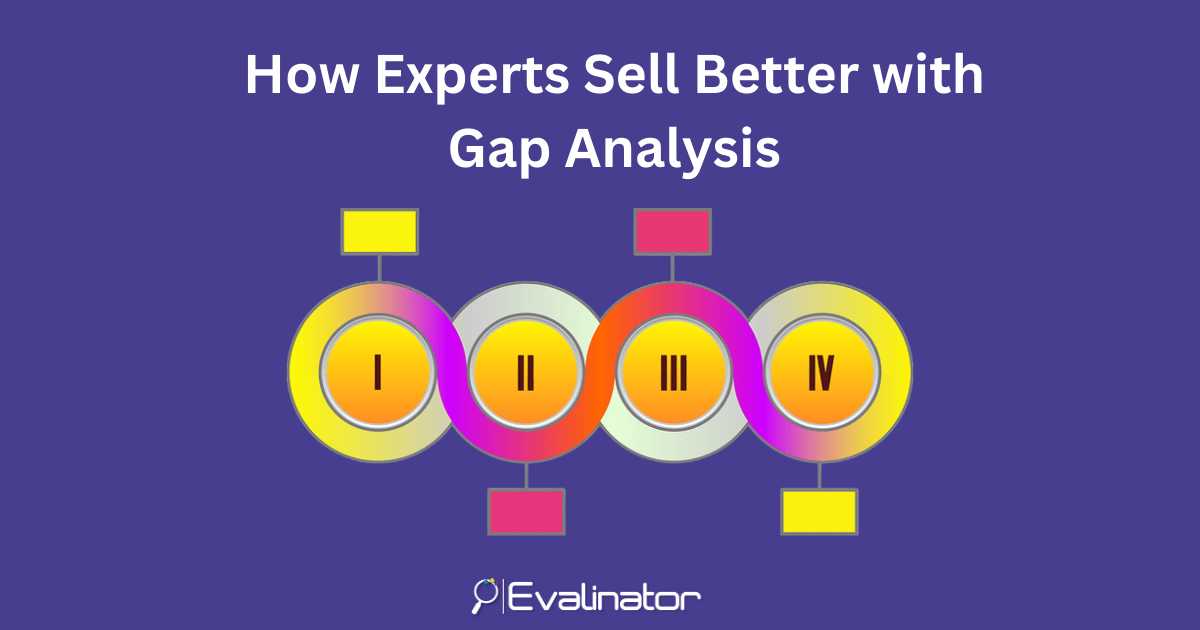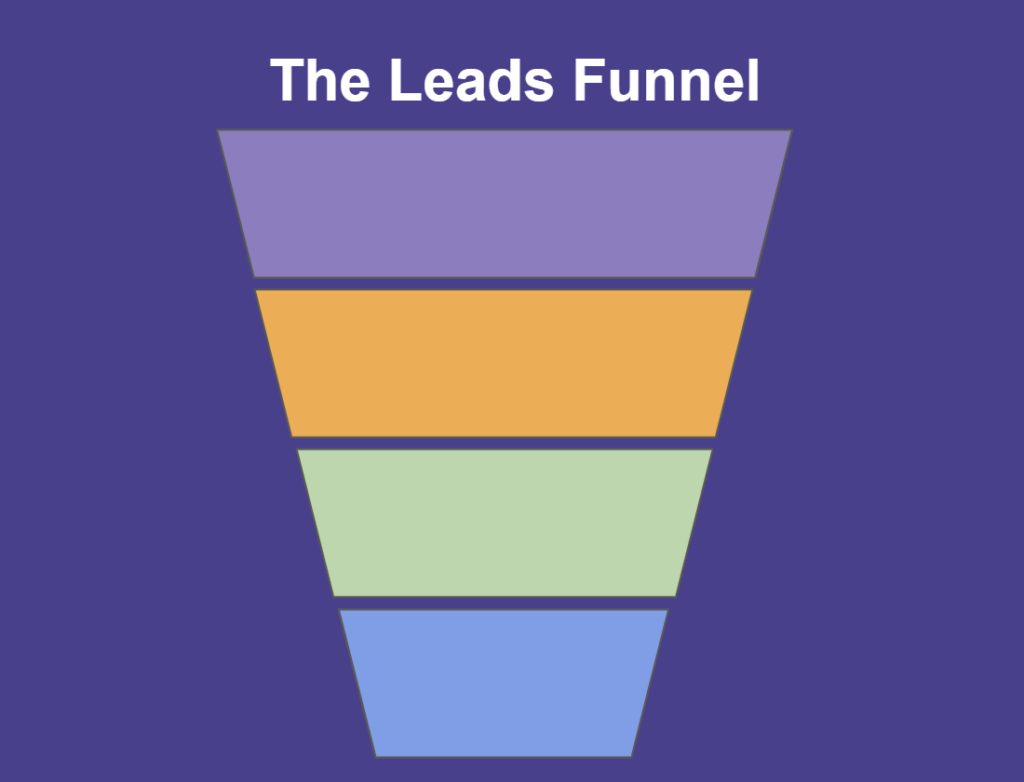


82% of experts say that building strong relationships is the most crucial and rewarding part of the sales process (HubSpot).
If you’re an expert – coach, consultant, or service professional – relationship building includes listening to clients and understanding what’s really going on behind the surface.
Based on that, you present your solution or package. You do gap analysis automatically.
But there’s one problem: even though your thinking is clear to you, it’s not always clear to your client.
That hesitation is understandable. Most clients want to buy clarity and progress. They want to know when they’ll see benefits and what that will look like.
In this article we’ll address how to improve that clarity with gap analysis so you can reduce your sales cycles and retain clients better.
Many experts run into the same problems when trying to move a prospect forward.
From a prospect’s point of view, the conversation often jumps from problem to package. You’ve explained the reasoning in your own expert way, but they’re still trying to connect the dots. The more experience you have, the more likely it is that your explanations are based on intuition and expertise that’s difficult for your clients to grasp quickly.
Clients are unsure of what to do next. You might be offering a coaching package, a 3-month consulting retainer, or a service bundle. They ask for more details, a sample, or say they need to “think about it.” You’ve given them your best recommendation, but they’re not ready to commit. It feels like pulling teeth just to keep the momentum going.
If they’re confused about how your solution solves their specific problem, it’s not because your package is wrong. Instead, it’s because the bridge between their current state and your solution isn’t clearly visible.
A gap analysis turns that uncertainty into clarity.
For example, whether you’re a leadership coach pointing out issues with delegation and conflict resolution, or a digital transformation consultant identifying gaps in technology & customer segmentation, a gap analysis brings clarity.
You can demonstrate to clients:
This is how all experts are intuitively selling too. They’re not just selling a 3-month package but they are selling progress.
All that you have to do is to convert this intuition into a structured format.
It establishes your expert authority, and helps clients move forward much more quickly.
Once your clients understand the general idea of what you do, two types of resistance often remain, and neither has to do with your capability.
They’re either:
Analytical blockers — unclear ROI, budgets, timeline, or deliverables
Emotional blockers — uncertainty, fear of change, or lack of momentum
Your clients might not articulate it that way. But underneath the polite questions and delayed responses, these are the frictions that stall progress.
These can happen during an initial sale, and also during an active engagement leading to challenges with renewal.
Let’s look at each one.
Clients get stuck because they can’t see the value. The price feels abstract. The path from “here to success” isn’t mapped out clearly enough.
A gap analysis gives you the tools to make the logic visible.
A tech consultant can use a quick diagnostic to show that their client’s current CRM usage ranks 4/10 in lead follow-up speed and 3/10 in segmentation. Then they show a 90-day roadmap to fix those bottlenecks — with metrics attached to each milestone.
A financial advisor might help a client see that their retirement plan is off-track by identifying low savings consistency and unclear investment goals. Then they anchor the engagement around fixing those issues month by month.
By using your framework in a structured way to highlight the gaps and how you’ll address them, you’re showing clients how your expertise moves the needle and how you’ll track it.
This builds your authority. And even though your client may still shop around, you become the expert anchor in their minds.
That’s a great position to be in.
Even when the logic is clear, uncertainty can get in the way.
“What if this is too much change?”
“Will this coach or consultant really understand me and my world?”
Experts also have to show momentum and build in a periodic sense of accomplishment.
An executive coach might open the first session with a Wheel of Life, scoring areas like team communication, strategic thinking, or accountability. The client sees where they are today and chooses one area to work on first.
A management consultant might use a diagnostic framework such as a maturity model. It feels less like onboarding, more like co-creating. The client walks away with insight and a clear next step — not just a contract to review.
When people feel progress early, they trust the process. When they co-create their own roadmap, they commit more fully.
This is a common concern, especially among experts who are shifting toward more standardized or “productized” offers.
A gap analysis makes your service feel personal without making your process messy. You still follow your structured approach — your modules, sessions, or phases. But now it’s wrapped in a narrative the client connects with.
You’re not delivering something new each time. You’re showing each client how your proven system fits their unique situation.
It’s tailored. Not bespoke.
You already have what you need – your framework, or your offer!
Start with the structure you use in your sales pitch and the questions you ask to gather information. Think about the outcomes you drive for your client and how to measure them.
Then create a simple questionnaire that helps your client reflect on where they are today.
Here’s how to create the tool:
Visualize the scores: add up the scores and use a bar or radar chart to show strengths and gaps.
That’s it. You now have a simple, structured tool that gives your client insight and gives you leverage. What’s more you can use this as a lead generation tool as well!
Use the results to position your offer more clearly. You can set short-term goals against each question or against the overall score. And you can also show how you’ll measure progress in say 3 months. That way you’ll quantify the value you bring to them.
A tool like this help you during a sales conversation, during onboarding, and also during renewals. It brings clarity, commitment, and confidence for you and your clients.
Expertise based selling means helping clients see the benefits you’ll drive for them in a way that’s clear, structured, and actionable for them. That’s leads to building great relationships as mentioned in the HubSpot article too.
Gap analysis helps you do that. It turns your thought process into something clients can see, understand, and say yes to.
It turns the conversation from “Here’s what I think you should buy” to “Let’s understand the problem together.”
That shift builds trust — and momentum. You set goals with the client, not for them.
P.S.
Want to create a simple, personalized gap analysis that has built in scoring, categories & questions, rating bands, and which leads naturally into goal setting and before-after pictures? Evalinator helps you do exactly that. It transforms your expertise into an excellent gap analysis tool and authority building platform. Try it free and turn your expertise into a powerful tool for action.

Feeling frustrated with lead generation?
Take this free, 5-minute quiz and get more prospects into your leads funnel.
Instant Results. Actionable recommendations. Email required.
Find Your Score >>